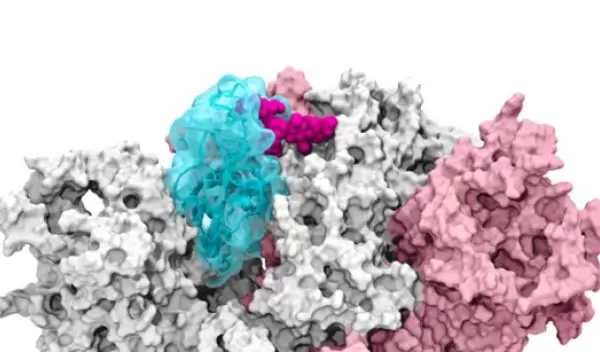
Researchers discover hidden SARS-CoV-2 'gate' that opens to allow COVID-19 infection
Since the early days of the COVID-19 pandemic, scientists have aggressively pursued the secrets of the mechanisms that allow severe acute respiratory syndrome coronavirus 2, or SARS-CoV-2, to enter and infect healthy human cells.
Early in the pandemic, University of California, San Diego's Rommie Amaro, a computational biophysical chemist, helped develop a detailed visualization of the SARS-CoV-2 spike protein that efficiently latches onto cell receptors.
Now, Amaro and colleagues at UC San Diego, the University of Pittsburgh, the University of Texas at Austin, Columbia University and the University of Wisconsin-Milwaukee have discovered how glycans -- molecules that make up a sugary residue around the edges of the spike protein -- act as infection gateways.
Published in the journal Nature Chemistry, a U.S. National Science Foundation-supported study by Amaro, along with Lillian Chong at the University of Pittsburgh, UC San Diego researcher Terra Sztain and UC San Diego scientist Surl-Hee Ahn describes the discovery of glycan "gates" that open to allow SARS-CoV-2 entry.
"We essentially figured out how the spike actually opens and infects," said Amaro, senior author of the new study. "We've unlocked an important secret of the spike in how it infects cells. Without this gate the virus basically is rendered incapable of infection."
Amaro believes the team's gate discovery opens potential avenues for new therapeutics to counter SARS-CoV-2 infection. If glycan gates could be pharmacologically locked in the closed position, then the virus is effectively prevented from opening to entry and infection.
The spike's coating of glycans helps deceive the human immune system since it comes across as nothing more than a sugary residue. Previous technologies that imaged these structures depicted glycans in static open or closed positions. Supercomputing simulations then allowed the researchers to develop dynamic movies that revealed glycan gates activating from one position to another, offering a new piece of the infection story.
Manish Parashar, director of NSF's Office of Advanced Cyberinfrastructure, added, "NSF funds innovative research and cyberinfrastructure to support transformative discoveries that will change our lives. As the COVID-19 pandemic continues to ravage the world, NSF-funded research and cyberinfrastructure are providing a new understanding of the disease that will enable us to ultimately defeat it."


